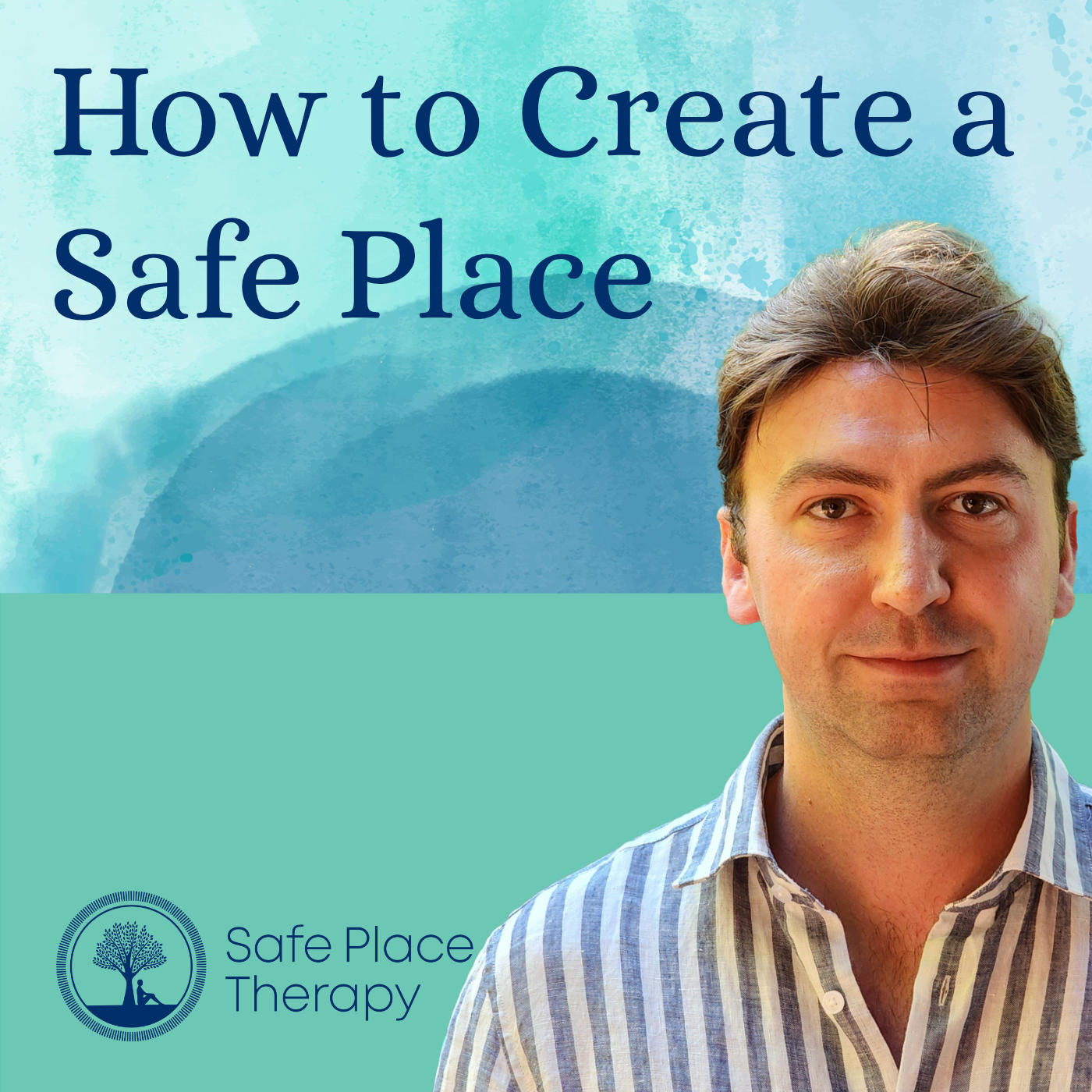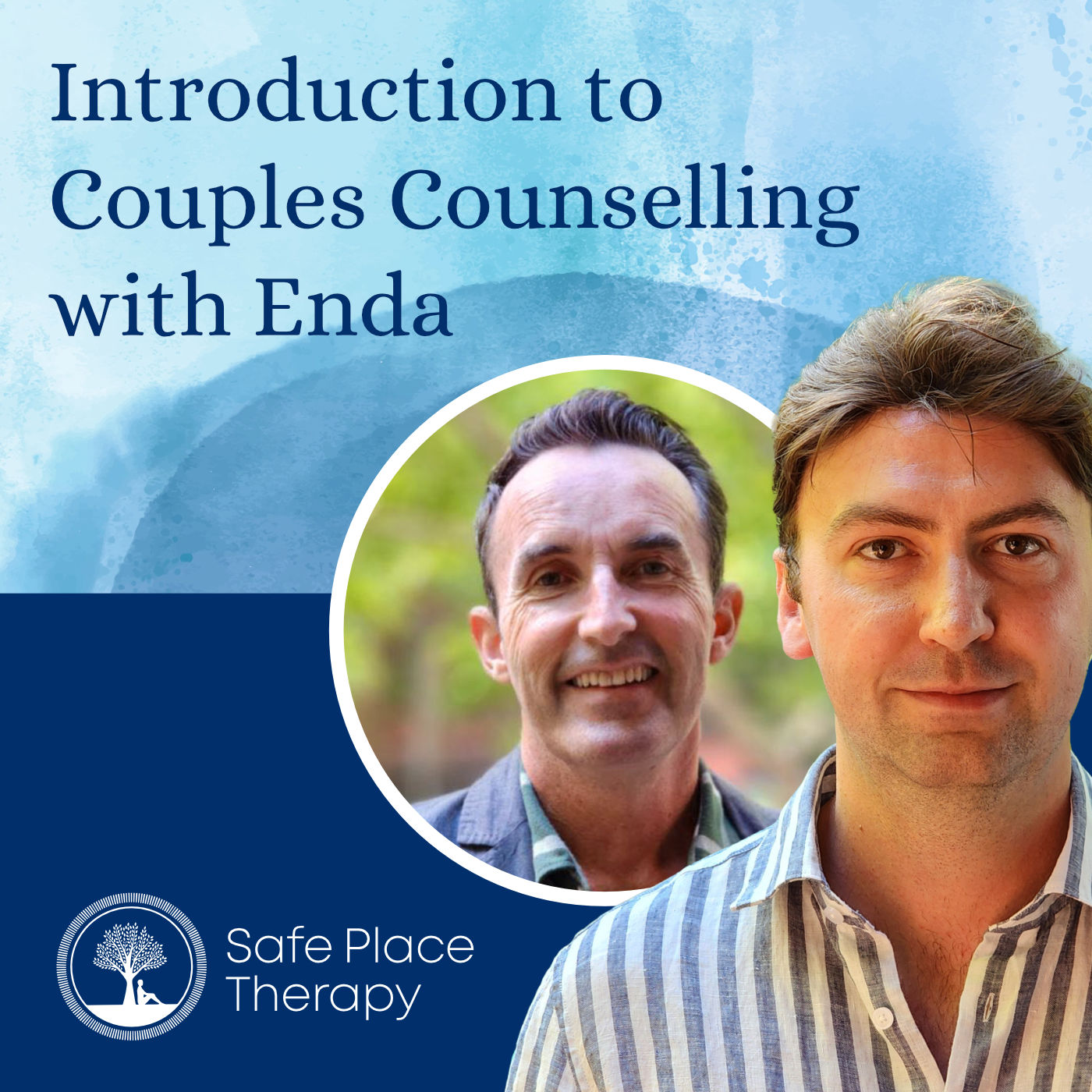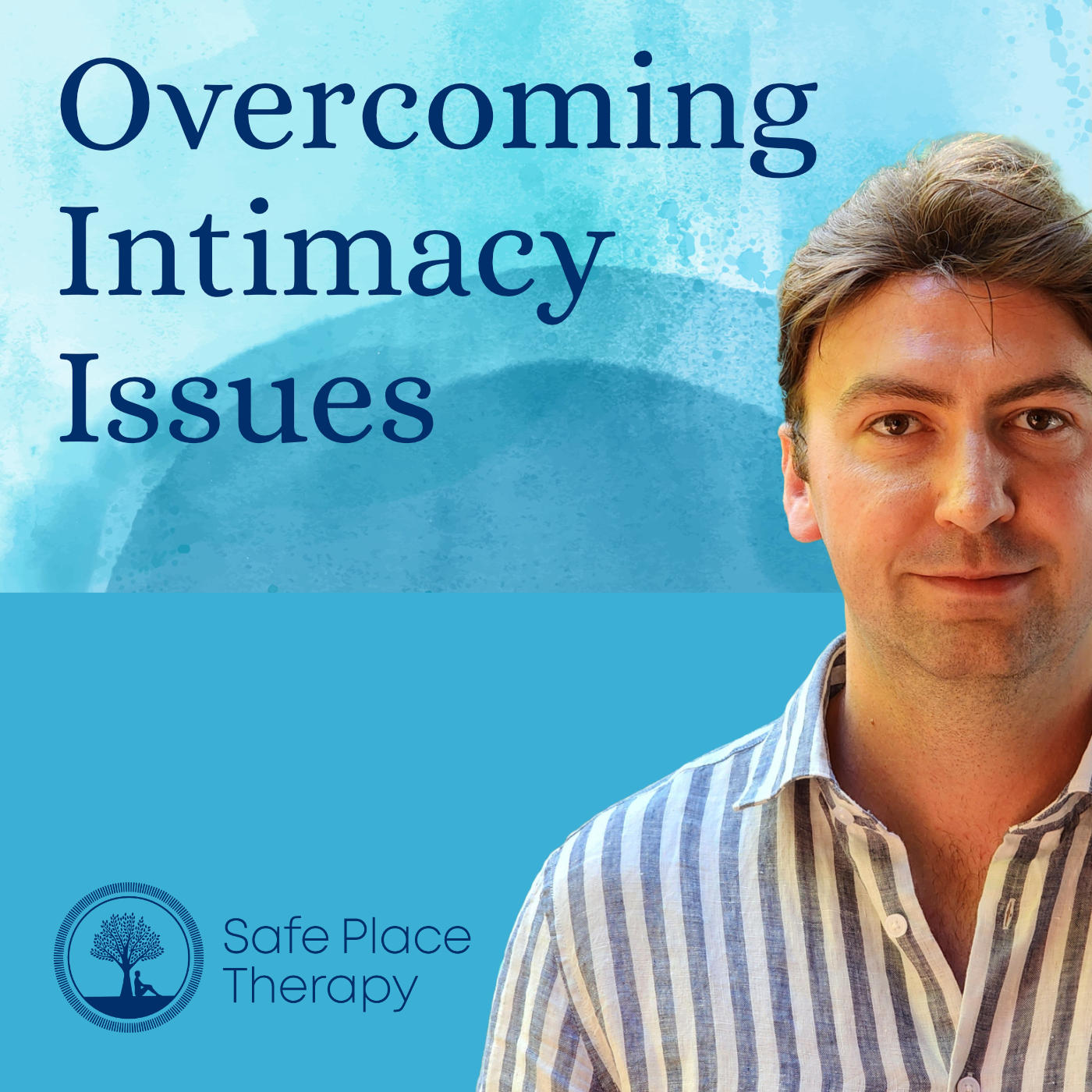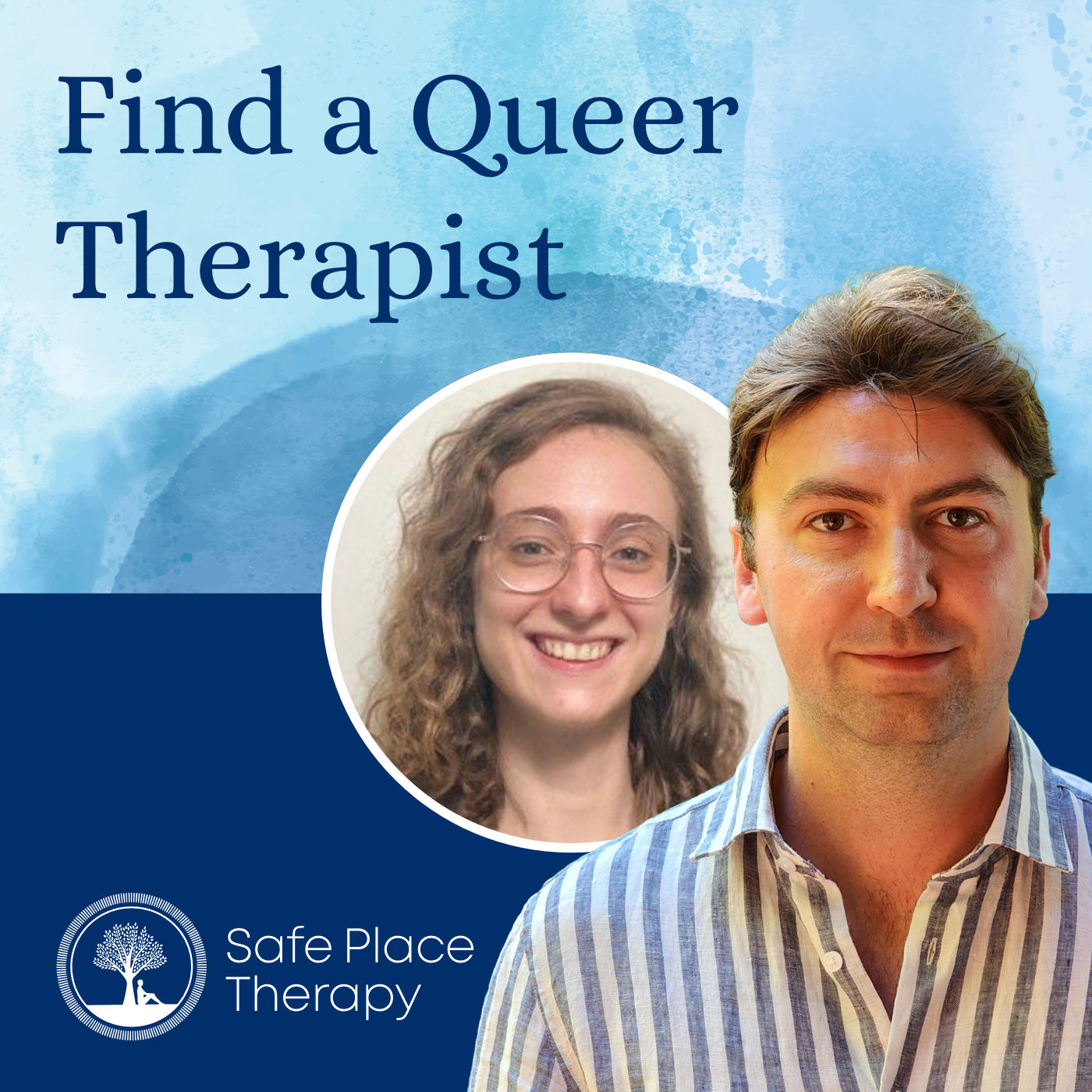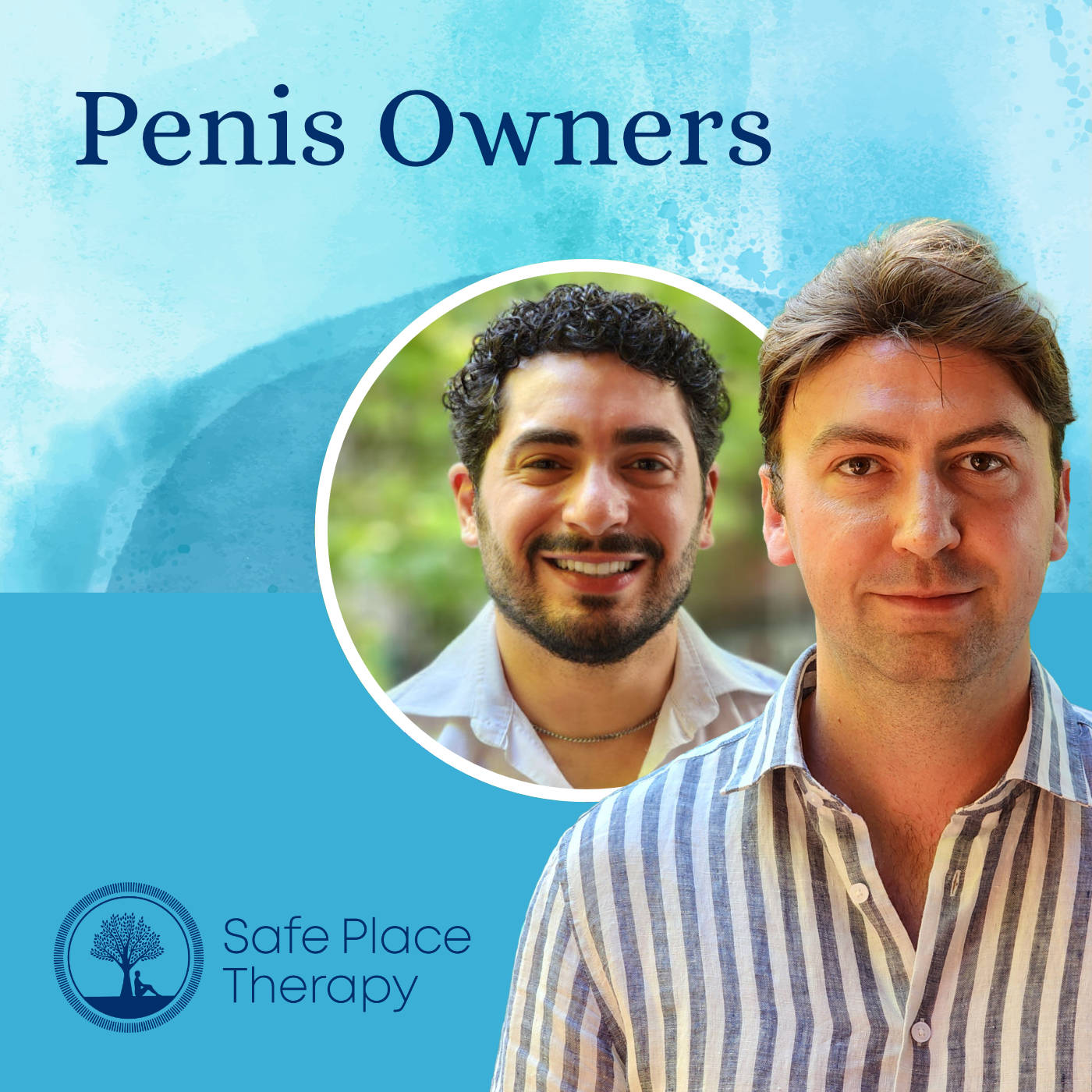Episode Transcript
[00:00:00] Foreign welcome to the Safe Place Therapy podcast channel. My name is Stuart Shevorden and I am one of the owners and directors of Safe Place Therapy and I'm a mental health social worker. I'd like to begin by acknowledging the traditional owners of the land in which we meet today. I would also like to pay my respects to elders past, present and emerging. We record this episode on and all our episodes in the Kulin Nation, but also on other beautiful lands across Victoria.
[00:00:38] Today we're going to be having a chat about creating a safe place visualization that often we use with clients for a couple of different reasons.
[00:00:51] As I said, my name is Stuart and I'm one of the owners of Safe Place Therapy, but also a mental health social worker.
[00:00:59] So, a safe place visualization we use for two important reasons. The first one is helping us kind of check in with what's going on internally.
[00:01:11] A lot of us kind of work in really busy environments. We might have kids, tasks, things we need to do, and we kind of live up here, right? There's this kind of mental gymnastics that we often do from day to day, which means we often feel disconnected with our emotions, what's going on. You know, that kind of internal space gets left a lot. So this tool helps us kind of check in, so to speak, on what's going on.
[00:01:40] The other really important for this tool that we use is to create a sense of safety, this kind of space that we need to settle our distress, settle the intensity of what's going on, but have like a base camp, so to speak, that we can kind of travel to if we need a bit of space from big emotions, big memories, or big things that, that we're doing in session to help people regulate but also kind of connect with this internal world. That can be really difficult sometimes.
[00:02:12] So those are the couple of reasons that we use this Safe Place. So it can actually be a proactive tool again, helping us check in, helping us kind of carve out a space to do that kind of inward looking. So a proactive measure, but also a reactive measure. So if you're feeling triggered or feeling like our distress level is getting to a particularly high state, we can use this tool to slow that down, understand what's going on internally.
[00:02:44] So, yeah, one issue that a lot of people talk to me about when we raise mindfulness activities or meditation type stuff is a lot of those tools are a little too simple.
[00:02:58] Simple in that, you know, meditation asks us to kind of blank our minds, right? Or, or see if we can go zero up here, which can Be nearly impossible or you know, pretty impossible for lots of us. So what I like to do to tweak this tool a little bit is to really encourage people to find a safe place visual that is stimulating, that it actually engages our brain with maybe a task that we like to do or something that our brain likes to kind of sink its teeth into, which naturally then helps our brain settle and our bodies settle right. Which often does get missed with grounding techniques or certain tools that are offered in a counseling session. Okay, so we're going to take some time to walk this process through. It might take a little bit of practice, it might be a little bit weird. But I want us to take this nice and slow, set up this space that you can go practice. But I really want you to make it yours, make it your individual space that you can travel to when you need to. Before we jump into the safe place visual, I need to give a bit of a trigger warning or a bit of a warning around noticing really big emotions or big things kind of hitting this as we kind of turn inward and notice what's going on in our body.
[00:04:31] Back to that idea that our brains are busy often. Yes, they're busy because we've got a lot of things to do and we need to do a lot of that, you know, jump, jump, hooping through life. But it might also be a bit of a defense mechanism or we're so used to, you know, really big anxiety or really big busyness going on up here that we are quite unsure. Or it's a very unknown territory when we turn inwards. So please be mindful of that. Again, just, just be careful.
[00:05:09] If you are aware of significant trauma in your past or if you are worried about what might happen as you turn inward, maybe it might be best to reach out for some counseling support or practice this tool. Learn this tool with a professional with you. That's, that's totally okay.
[00:05:31] And if things do bubble up as you practice this, please take care of yourself.
[00:05:37] We'll explain a bit later in the tool about if your number is really high, maybe best to hit pause and try some other tools.
[00:05:45] Reach out for some help with some helplines, that's perfectly okay.
[00:05:49] But yeah, we really shouldn't be doing this inward looking or creating a safe place case if our escalation is particularly high or there is kind of a triggered memory or a triggered big emotion going on at a, at a really high level. So just be mindful of this before you jump in and give this a go. That's not to deter People. It could actually be a really useful tool long term, but you might need some counseling sessions first, particularly if you're noticing some trauma triggers or really big emotions. Okay, so get yourself comfortable. You can kind of sit down if you like. Even laying down is perfectly fine.
[00:06:33] You don't have to watch the. The visual of this video. That's fine. You can kind of listen in the background as I kind of talk you through the steps. Also, please feel free to press pause if you need to move in your chair or move in the space. If you're feeling a bit restless. That's totally okay.
[00:06:52] Now I'm going to ask you to do a few different things, but if this feels a bit too uncomfortable or a little bit triggering for you, just kind of be mindful of that. And if you need to tweak this process for you, that's totally okay. I want it to be something that is helpful for you, not something that you just kind of throw away and push away because it didn't work. Okay, let's give it a go. Based on your needs, based on your scenario. Okay, so get yourself comfortable. If you feel comfortable, I want you to close your eyes for me. Or if that's uncomfortable, you can kind of stare at kind of one spot and kind of fuzzy your eyes a little bit. Half close your eyes. That's okay.
[00:07:38] And as you're closing your eyes, I want you to start wiggling your toes.
[00:07:43] Yeah, that sounds a bit weird, but we actually need to do some physical things sometimes. Some physical activity we don't normally do. Like wiggle our to. To help our brain focus on our body. And that's where this checking in starts. So wiggling our toes, noticing how weird that feels.
[00:08:06] I'll start that again. So I just want you to wiggle your toes for me and notice how weird that feels. You might have shoes on, you might have shoes off. Just notice if that feels a bit too uncomfortable or a little too weird. You can actually tense up your fists really nice and tight for 10 seconds and release.
[00:08:27] Tense up for 10 seconds and release.
[00:08:32] And this helps kind of shock our body to be in the here and now, which is called grounding, but also engage with our body.
[00:08:44] Okay. So keeping our eyes closed or half closed. Next, what I want you to do, as you're wiggling your toes, as you're clenching your fists, I want you to notice the sounds around you.
[00:08:55] So for me, I can hear some cars outside driving by.
[00:08:59] I can hear the aircon blowing.
[00:09:02] Just gonna go silent for a couple of seconds and just notice okay, great. Now stop wiggling your toes or clenching your fists. Next, what I want you to do is notice your breathing. So just notice what happens to your body as you breathe in or breathe out.
[00:09:24] If that's uncomfortable, you can continue clenching and you can continue wiggling your toes. That's okay.
[00:09:34] Next, what I want you to do is I want you to start imagining a safe place.
[00:09:40] So this could be a place that you've been to before, like a holiday or a beach somewhere, or it could be really simple like chilling at home, playing a game on the PlayStation.
[00:09:51] But I want the spot to be stimulating, right? So an activity that you like to do, a thing that your brain would maybe even get a little excited over, right? It could be a music festival, it could be camping with the family on the river.
[00:10:09] But I think we need to be careful with this one because I don't want it to be too emotionally charged, right? So let's not think of a big memory where, you know, we might have a family member that's a bit difficult or etc. Just really be mindful and careful of the spot you pick.
[00:10:29] Needing a sense of stimulation for that brain that's really busy, but also a sense of peace, a sense of calm. So both of those things.
[00:10:40] Okay.
[00:10:41] And while you're kind of shaping that environment, I really want you to think about making it your safe place. So you can decide what the weather is like, you can decide the level of stimulation. So you might play some music, you might even have your favorite snacks or your favorite pet with you. That's totally okay. Make that spot yours.
[00:11:07] And if your brain is kind of jumping around, that's okay. It might be jumping to what you need to do for the day, etc. Just kindly bring yourself back to that visual.
[00:11:18] And some people might need to crank up a bit more stimulation. So you might have to safe places that you jump to, right?
[00:11:27] Really make it your spot.
[00:11:31] And while you're there, I want you to start checking in with your scale, right? Your emotional scale. So just noticing, doing a bit of a body scan from the top of your head, down through your neck, down through your shoulders, your chest, your tummy, the rest of your body, and just notice a little bit of a scale. So 0 is I'm really calm, I'm really chilled out. 10 out of 10 is I'm freaking out. Panic attack, right?
[00:12:01] So just tuning in, noticing what number you're at and really building the safety. If your number is quite high, if your number is, let's say an 8, 9, 10 plus, I don't think a safe place is actually helpful right now. And you might need to go do some other grounding activities. But if you're kind of at a six or seven or less, let's kind of stick it out. Let's create some safety in this spot and use this kind of space to slow that number down.
[00:12:37] So think about your number, what the kind of signs of those different numbers are for you. It might be a beating chest, it might be some fast breathing. Just notice and just kind of conceptualize what might build some more safety in that safe place.
[00:13:02] So this is your space.
[00:13:05] You can change it if you need to, return to it whenever you like.
[00:13:15] Just noticing what's going on internally as you engage with that visual, as you kind of disconnect from the world around us and connect internally.
[00:13:33] Okay, So I want this to be your spot where you can kind of connect to, retreat to. It's almost like your base camp, your safe spot that you can, you know, retreat to. That's okay.
[00:13:50] And this is a spot that we're going to use in a counseling session to build a structure of safety, a structure of helpful things that helps settle your body, settle your distress.
[00:14:14] So now what I'll get you to do is come back to your toes. So wiggling your toes or clenching up your fists again, if you need to, getting back into your body in terms of feeling your body, noticing the sounds around you again, and when you feel comfortable opening up your eyes, fully, looking around you, really good job.
[00:14:44] So that's a safe place visual, and I hope that you made it yours in a really individual way.
[00:14:53] I hope that you can test this out. Right. It might take some time to get used to it. You might not be used to sitting still. You might not be used to trying to encourage your brain to settle and encourage your brain to slow down. That takes some time.
[00:15:12] But for you personally, I want you to kind of practice this.
[00:15:16] So you could practice it in the morning in the shower. You can practice it, you know, just before you get out of the car to. To go to work.
[00:15:24] But even if you are in a meeting, right, and there's people around you, obviously, you know, closing your eyes might not be appropriate, but maybe you could actually wiggle your toes and just kind of mentally go there, right? That's okay. You don't have to do the whole process. That's fine. But just giving you a bit of a button, you can push to check in, assess where you're at, notice what's going on internally, and it could. Could kind of be just a real mental check in. Yeah, but this deeper exercise is deeper tool of noticing and going inward is of also helpful and needed when we're digging into big emotions or we're digging into other things in a counseling session. So from here, see how you go.
[00:16:15] If you'd like to find out more about emotions emotion scales, there's some more videos that we'll be putting up.
[00:16:22] If you want some more information about SAC voice therapy, we have our website in the description box. And please reach out to us if you are needing some more tools and more things to help you feel regulated or help you get through a stressful day. Engage with some of this big trauma stuff, but also, you know, just dealing with life. These tools are meant for everybody, but we really need to kind of tailor the tools based on individual brains and individual experiences who might have trauma, who might not have trauma. And we need to tailor the tools for that person.
[00:17:04] So I hope this is helpful. Give it a go and reach out to us if you're needing some extra support. Okay, bye for now. Take care.
